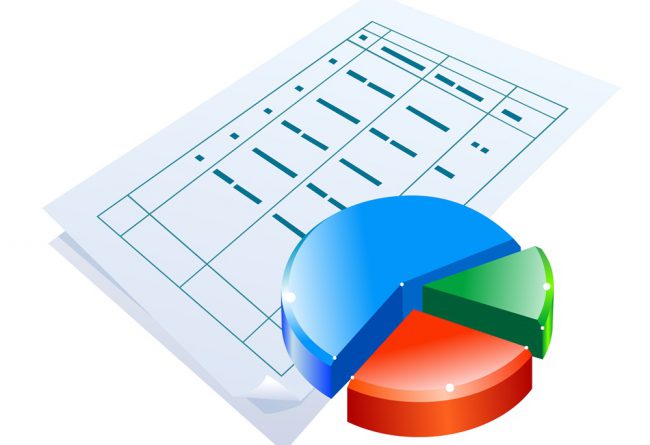Employee Skills Assessments: Enhancing Government Workforce Capabilities

Employee Skills Assessments: Enhancing Government Workforce Capabilities
In the ever-changing world of work, government agencies face challenges in adapting to modern demands and expectations. Employee skills assessments have become an essential tool for closing skills gaps, ensuring safety and compliance, and ultimately boosting productivity. This guide explores why and how employee skills assessments can transform the public sector workforce.
What are Employee Skills Assessments?
Employee skills assessments are systematic processes that evaluate employees’ strengths, weaknesses, and development needs. Think of them as a health checkup for your workforce. Skills assessments look at various competencies to see where employees are strong and where they require guidance or some support.
These assessments are more than just an HR tool for government agencies—they’re a strategic asset. They help align workforce capabilities with organizational goals so everyone can contribute to the agency’s big goal.
Why Government Agencies Need Skills Assessments
The reality is that the government workforce is considerably changing. The days of lifetime careers in one role are disappearing fast. Today’s public sector needs employees who can wear many hats, adapt to new technology, and tackle complex problems.
That’s where skills assessments come in to provide the following benefits:
- Closing the Skills Gap: For over 20 years, the Government Accountability Office (GAO) has been flagging strategic human capital management as a problem. The issue? Agencies can’t identify and address skills gaps in their workforce. Skills assessments highlight these gaps so agencies can take targeted action.
- Compliance and Safety: Many government roles have strict regulatory requirements. Regular and targeted skills assessments ensure employees have the necessary competencies to meet the set standards, reducing the risk of non-compliance.
- Productivity Boost: Armed with the right skills for the job, employees can work more efficiently and effectively. It’s that simple. This leads to a huge boost in productivity.
- Adapting to Technological Change: With the pace of technological change, especially in areas like artificial intelligence, skills assessments help agencies stay ahead of the game by identifying emerging skill needs.
How Government Agencies Can Use Skills Assessments
Now you know why skills assessments are important, here’s a look at how government agencies can use them:
- Evaluating Job Candidates: When hiring for a critical role in your agency, you don’t have to rely on resumes and interviews; you use a skills assessment to evaluate candidates. This way, you can see beyond the polished resume what a candidate can do.
- Pre-Training Evaluations: Before sending employees to training, wouldn’t it be great to know exactly what they need to learn? Well, pre-training assessments do just that. They help you tailor training programs to fill specific skill gaps so your training budget goes further.
- Post-Training Validation: You’ve invested in training, but how do you know if it worked? Post-training assessments measure the impact of your learning programs. They show you what knowledge is stuck and what needs to be reinforced.
How to Implement Skills Assessments
The good thing about implementing skills assessments is that they are quite straightforward. It all comes down to simplifying things. Here are tips to help you accomplish this:
- Define Your Objectives: First things first, what skills are critical to our agency’s success? Make a list of the competencies that matter most for each role. This list will become your roadmap for assessment.
- Choose the Right Assessment Method: There’s no one-size-fits-all. You might use online quizzes for technical skills, role-playing exercises for soft skills, or hands-on demonstrations for practical skills. The key is to match the assessment method to the skill you’re testing.
- Develop a Plan: Create a timeline for regular assessments. Decide who will be assessed, when, and how often. Make sure everyone knows the process and the benefits.
- Do the Assessments: As you roll out the assessments, be transparent about what they’re for. Tell employees this is about growth, not punishment. Create a safe space where employees feel comfortable showing off their skills and identifying areas for improvement.
- Analyze and Act: The real value of assessments is in what you do with the results. Use the data to inform your training programs, guide career conversations, and transform your workforce strategy.
Benefits of Digital Assessment Tools
In this digital age, pen-and-paper assessments just don’t cut it anymore. Modern competency assessment tools offer additional perks, including:
- Efficiency: Automated assessments save time and reduce administrative costs. One can easily assess hundreds of employees at once and get instant results.
- Customization: Digital tools allow you to create assessments for different roles and departments. You can update questions to reflect new skills or technologies.
- Real-Time Insights: Get instant feedback on employee performance. This means you can make decisions and intervene quickly.
- Consistency: Digital assessments ensure all employees are assessed on the same criteria, so it’s fair and bias-free.
Variety of Assessment Tools Available
There are various assessment tools available to determine proficiency in the areas that matter most to your organization. A noteworthy digital assessment, Skills Benchmark in Skillsoft Percipio platform, measures a learner’s proficiency in a specific skill. By utilizing Skills Benchmarks, government agencies can develop a better understanding of their workforce’s skill set and make data-driven training decisions.
The New Face of HR: Office of Personal Management (OPM) Competency Models
In May 2024, OPM released new competency models for HR positions across the federal government. This impacts over 40,000 HR employees, and it shifts how we think about HR skills in the public sector.
These new models are all about practical skills. They recognize that today’s HR professionals in government need more than just knowledge of policies and procedures. The competencies now include:
- Creative problem-solving to solve complex workforce issues
- Strong decision-making to navigate ambiguity
- Teamwork and collaboration across departments and agencies
What’s interesting about these models is how they were developed. OPM didn’t just create them in a vacuum. They surveyed federal employees to find out what skills they thought were needed for HR work. This bottom-up approach reflects the reality of daily government.
The new competency models are part of a bigger effort to address strategic human capital management, which has been on the Government Accountability Office (GAO) High-Risk List for over 20 years. By redefining the skills needed in federal HR, OPM is trying to help agencies identify and address skills gaps across the entire government workforce.
Making It Happen: Implementing Skills Assessments in Your Agency
Ready to bring skills assessments to your agency? Here are key tips to implement:
- Start Small: There’s no need to rush the initial phase. Start with a pilot in one department. After that, you can work out the bugs before going agency-wide.
- Communicate Clearly: Be upfront about why you’re conducting assessments and address the concerns head-on. When employees know the benefits, they’ll be more engaged with the process.
- Choose the Right Tools: Invest in assessment platforms that can handle the complexity of government roles. Make sure they meet federal security standards and can integrate with your existing systems.
- Train Your Trainers: Ensure those administering the assessments know the process inside and out. They should be able to answer questions and support employees.
- Follow Through: Don’t let assessment results sit on a shelf. Use them to inform your training programs, promote decisions, and your overall workforce strategy.
- Celebrate Growth: Recognize and reward employees who show significant skill growth. This creates a culture of continuous learning.
The Future: Skills Assessments and Government Work
As we look ahead, it’s clear government work is changing fast. Artificial intelligence, automation, and new technologies are redefining job roles faster than ever before.
Skills assessments aren’t just about what employees can do today, they’re about what they’ll need to do tomorrow. By regularly evaluating and developing employee skills, government agencies can build a competent, adaptable, and future-proof workforce.
Evidently, it’s a journey, not a destination. It calls for ongoing commitment, flexibility, and a willingness to learn and adapt. But the ultimate prize is quite rewarding. It yields a more skilled, engaged, and effective workforce – it is worth it.
As you start this journey, keep the big picture in mind. Skills assessments aren’t about ticking boxes or meeting quotas. They’re about building a government workforce that can tackle today and tomorrow and serve the public with excellence and innovation.
Conclusion
In today’s rapidly evolving workplace, employees need strong, adaptable skills to succeed. For the past 25 years, Enterprise Training Solutions (ETS) has offered online training to the public sector that drives employee effectiveness and productivity. To learn more about courses available through ETS, go to:
https://enterprisetraining.com/catalog/leadership-and-professional-development-solution/business-skills/


